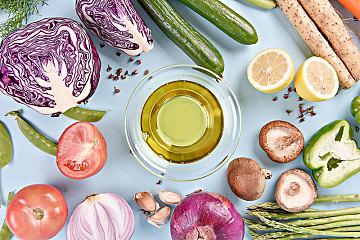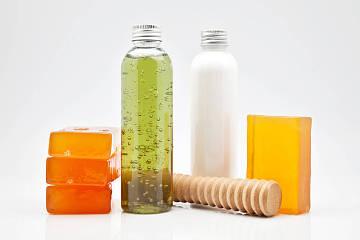Recently, the weather has gradually turned cold throughout the country, and the footsteps of autumn are getting closer.
The burst of “autumn” makes the air dry. At this time, how to better skin care and moisturizing has become the focus of many people. When it comes to moisturizing products, pharmacies often have olive oil and glycerin. These two kinds of “oil” have similar effects when applied externally. So what is the difference between them? Let’s take a look!
The first understanding of the two “oils”
1. Olive oil (for external use)
Olive oil is directly cold pressed from fresh olive oil, which is rich in monounsaturated fatty acids, vitamin A, vitamin B, vitamin D, vitamin E, vitamin K and antioxidants. Due to the high nutritional value of olive oil, in addition to being edible, it can also be used for skin care and beauty.
Features:Olive oil is rich in squalene and essential fatty acids with excellent skin affinity, effectively maintaining the elasticity and moisturization of the skin; olive oil is rich in monounsaturated fatty acids and vitamins and phenolic antioxidants, effective Eliminates skin wrinkles and prevents skin aging. External application of skin can also fight UV rays and prevent skin cancer.
Application: It isused for dry skin and chapped skin caused by seasonal environmental changes. It is used to massage the skin of infants and young children, and it can help skin care for infants and young children; it is used for maternal skin care and the thinning and elimination of stretch marks; it is used for daily moisturizing treatment of skin and hair.

2, glycerin (topical)
Glycerin, glycerol, is colorless, odorless, sweet, and has a clear, viscous liquid appearance. It is hygroscopic and is an organic substance. Glycerin has many uses in life. When used as a moisturizing skin care, it is generally not 100% pure glycerin, but an aqueous glycerin solution.
Features:The moisturizing effect of glycerin is to absorb a certain amount of water to form a “water film” on the skin’s exterior, which is to resist the damage of the external environment. But if the skin is too dry, it is not suitable for glycerin. Because it is in an excessively dry skin condition, glycerin is likely to have a reaction to absorb water in the skin of the human body in order to achieve equilibrium.
Application: It isgenerally used for dry skin peeling, cracking of hands and feet, chapped lips, etc. It can be used for skin care, moisturizing and moisturizing after skin bathing or skin massage and foot massage.

Similarities and differences between the two kinds of “oil”
1, the same point
Both olive oil and glycerin have a certain skin care effect, which can moisturize and moisturize.
2, different points
Although it is called “oil”, unlike the oil of olive oil extracted from olive fruit, glycerin is not an oil, but a thick liquid extracted from fat.
Olive oil is rich in various nutrients, which can greatly improve the nutritional status of the skin. While glycerin itself does not contain nutrients, the moisturizing effect on the skin only utilizes its own water absorption.
Olive oil can be used in any climate, while glycerin is suitable for use in humid climates and is not suitable for use in air-conditioned rooms, heating rooms or dry climates. Because glycerin is very absorbent, it can absorb moisture from the air to moisturize the skin when the air humidity is high. However, if the air humidity is low (less than 50%), glycerin may in turn absorb the moisture in the skin and let the skin More dry.
In addition to moisturizing and moisturizing, olive oil can also be used to dilute the skin and hair care; in addition to moisturizing and moisturizing, glycerin-containing external preparations such as Kaisailu can lubricate and stimulate the intestinal wall, soften stools, and be used in children and the year. The treatment of constipation in the old and infirm.


